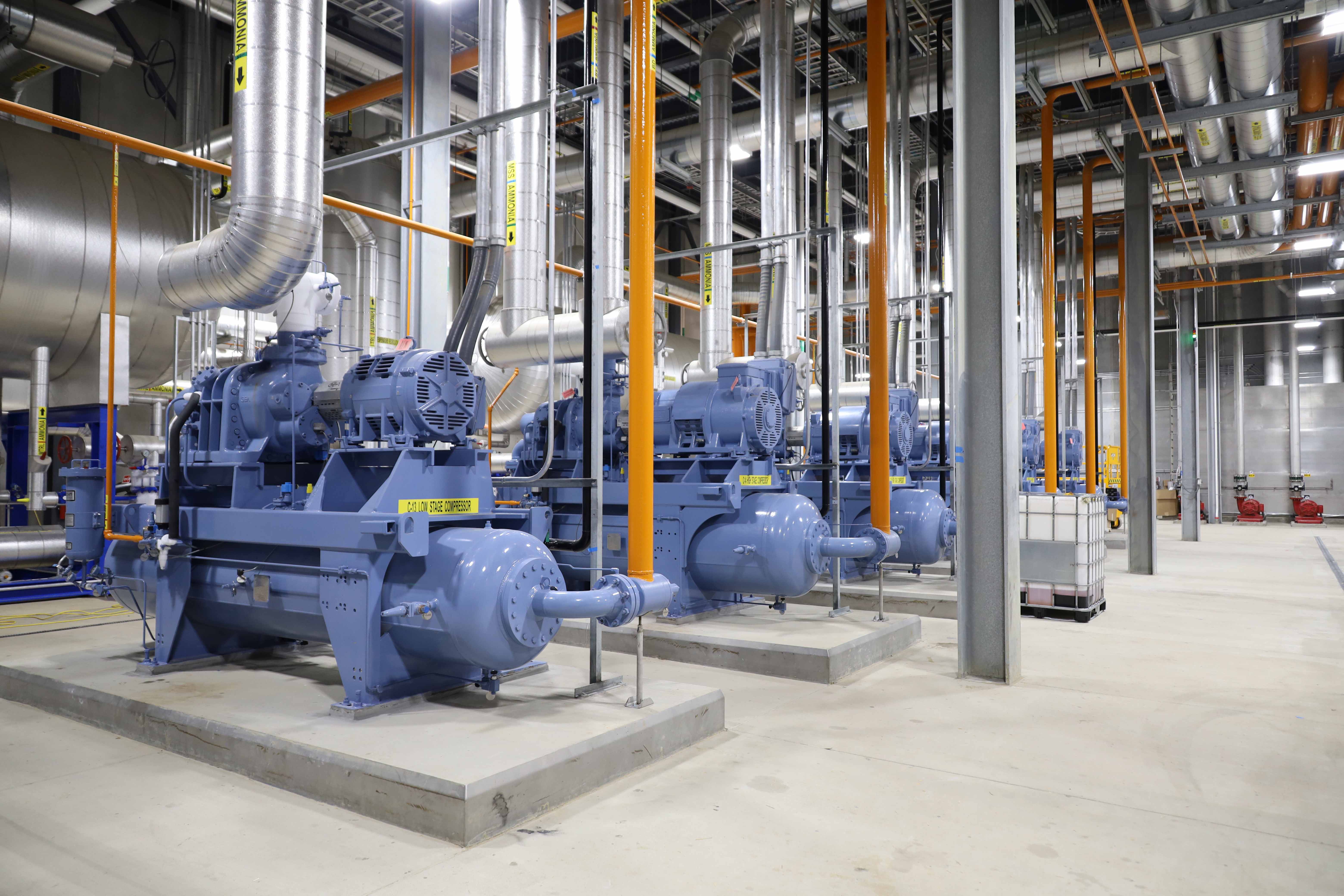Refrigeration 101 – Understanding the Basics
August 13, 2025

Have you ever wondered how refrigeration works? Refrigeration fundamentals start with the process of removing heat from a space or object to maintain a temperature below the surrounding environment. Industrial refrigeration systems operate on the vapor compression cycle, which involves four main components working together in a refrigeration process flow:
- Compressor: Often referred to as the "heart" of the system, the compressor accepts low-pressure, low-temperature vapor from the evaporator and compresses it into high-pressure, high-temperature vapor. This compression creates the pressure difference needed to move refrigerant through the system.
- Condenser: The high-pressure vapor from the compressor flows into the condenser, where it releases heat to the outside environment. This heat rejection causes the refrigerant to condense into a high-pressure liquid.
- Expansion Device: The liquid refrigerant then passes through the expansion device, which meters its flow into the evaporator. This device also creates a pressure drop, allowing the refrigerant to expand and partially flash into vapor. This step separates the high-pressure side of the system from the low-pressure side.
- Evaporator: The refrigerant enters the evaporator as a low-pressure mixture of liquid and vapor. Here, it absorbs heat from the product or space being cooled, causing the liquid refrigerant to boil into vapor. The low-pressure vapor then flows back to the compressor, completing the cycle.
How These Components Work Together
The refrigeration system is a closed loop, with each component playing a critical role. The compressor drives the cycle by creating the pressure difference needed to move refrigerant. The condenser removes heat from the refrigerant, while the expansion device controls the flow and pressure. Finally, the evaporator absorbs heat, achieving the cooling effect. Together, these components ensure efficient heat transfer and temperature control.
This cycle is the backbone of refrigeration systems, enabling industries to cool products, spaces, and processes efficiently. Whether you're an operator or simply curious, understanding these fundamentals is key to appreciating the role refrigeration plays in modern industry.
Need expert advice or services for your industrial refrigeration system? Contact us today to learn how we can help optimize your operations!